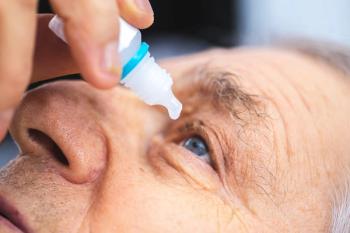
Sydnexis releases phase 3 STAR trial results on SYD-101 0.01% for slowing myopia progression
The trial met its primary efficacy and key secondary end points.
Topline results that were recently released from Sydnexis’s phase 3 Study of Atropine for the Reduction of Myopia Progression (STAR) trial of SYD-101 (atropine 0.01%) for slowing the progression of myopia in children demonstrated that the trial met its primary efficacy and key secondary end points. The primary efficacy end point was the proportion of patients with confirmed progression of -0.75 D at 36 months versus vehicle, (139 vs 111 patients (Vehicle vs. 0.01%); p=0.0226), with the secondary end point as mean myopic annual progression rate in the full study population at month 36 (vehicle: -0.38 D/year vs 0.01% -0.30 D/year (p=0.0002), according to a news release.1
The primary efficacy end point was proposed by the US Food and Drug Administration (FDA).1
“The data presented at AMCP Nexus 2025 show strong treatment effects in the full study population at 36 months but in younger patients, the magnitude of effect gets larger, and in patients with documented faster progression, the magnitude of treatment effect increases even more,” said Perry Sternberg, Sydnexis CEO, in the release. “The STAR data demonstrate that younger kids who historically exhibit fast progression, which is the subpopulation of children at highest risk for severe disease, benefit the most from treatment with SYD-101 0.01%.”
Additionally, SYD-101 was reported to be well-tolerated with no unexpected atropine-related adverse events.1
According to Sydnexis, the phase 3 STAR trial is the largest global clinical program completed to date for pediatric myopia, with a total of 847 children aged 3-14 involved in treatment initiation. Inclusion criteria included patients with myopia -0.50 D to -6.00 D with a mean baseline progression of -2.65D. Patients were enrolled throughout the US and Europe, then randomized 1:1:1 to vehicle (placebo), SYD-101 0.01% or SYD-101 0.03%.1
“Findings from the STAR trial, which is the largest pediatric myopia study to date, reinforce the importance of early intervention, both in terms of patient age and disease progression,” said Christie Morse, MD, executive vice president of the American Association for Pediatric Ophthalmology and Strabismus, in the release. “The results highlight the potential of low-dose atropine to help preserve children’s vision over time, a meaningful step forward in how we approach the management of this increasingly prevalent condition.”
Sydnexis noted that the primary efficacy and key secondary end points were met despite over a third (36%) of patients in the SYD-101 arm were between 16-18 years old and demonstrated “very little progression” by the end of the study. Additionally, the pre-specified analysis of change from baseline spherical equivalent (SE) also showed that SYD-101 0.01% and 0.03%, when compared to vehicle, had significantly smaller changes at month 36 (vehicle ‑0.92 D; 0.01% -0.71 D (p-0.0022); 0.03% 0.76 D (p=0.0158)). The magnitude of clinical effect of change in SE was also found to be larger in younger patients, aged 3-12 years old at treatment initiation, with both SYD-101 0.01% and 0.03% reported to have nominal statical significance in the trial (vehicle ‑1.07 D; 0.01% -0.77 D (p-0.0002); 0.03% 0.85 D (p=0.0065)).1
“Compounded low-dose atropine has posed challenges from both an access and a consistency standpoint. SYD-101’s unique formulation of atropine, which has been well-researched and supported by the results of the STAR trial, could be a valuable treatment option to help protect children’s vision and improve long-term outcomes,” said Kevin Chan, OD, MS, FAAO, senior clinical director of Treehouse Eyes, in the release.
Additional data released by Sydnexis involved a subgroup of fast progressors, defined as a more than -0.5D per year progression prior to the study, at 36 months. The patients had low to moderate myopia (-0.50 D to -3.00D) at study initiation, with SYD-101 0.01% reducing progression by more than 50%.1
“The STAR study is an extremely important contribution to the growing body of evidence supporting low-dose atropine as a therapeutic option for PPM and reinforces the unmet need eye care practitioners see in the field every day,” said Patrick Johnson, PhD, president of Sydnexis, in the release. “SYD-101 can meaningfully slow the trajectory of this disease and would be a welcome improvement to the compounded products that lack adequate quality oversight that are currently being used chronically in kids.”
Reference:
Sydnexis announces topline pivotal data from phase 3 STAR trial of SYD-101 for patients with pediatric progression myopia presented at AMCP Nexus 2025. News release. Sydnexis. November 4, 2025. Accessed November 4, 2025.
https://sydnexis.com/sydnexis-announces-topline-pivotal-data-from-phase-3-star-trial-of-syd-101-for-patients-with-pediatric-progressive-myopia-presented-at-amcp-nexus-2025/
Newsletter
Want more insights like this? Subscribe to Optometry Times and get clinical pearls and practice tips delivered straight to your inbox.









































